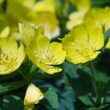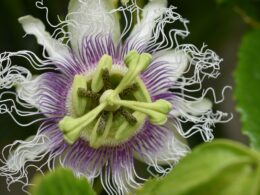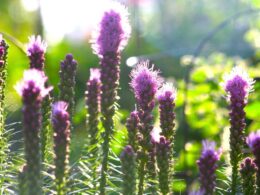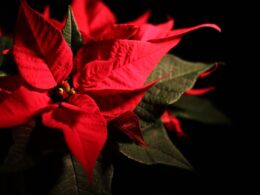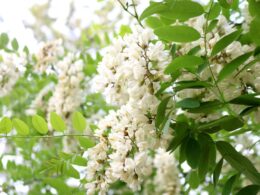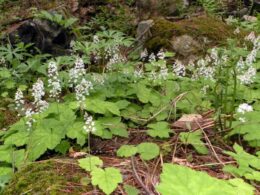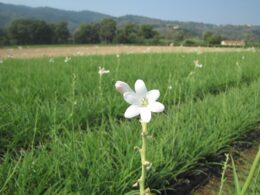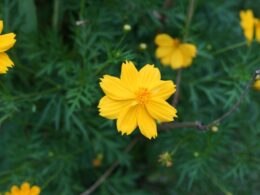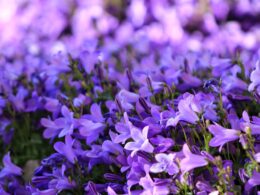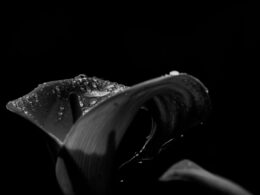The Beauty of Peacock Flower Trees
Peacock flower tree is usually referred to as a shrub or a small tree. It grows to a height up to 15 feet. The most striking feature of the peacock flower tree is its flowers. The flowers are showy and bright, ranging in color from orange to red to yellow. They have long, curved petals. They are borne in long, drooping clusters and bloom throughout the year.
The peacock flower tree has bipinnately compound leaves that are made up of small, oval-shaped leaflets. The leaflets are green and have a glossy surface. The fruit of the peacock flower tree is a large, dark brown pod. Inside the pod are many small seeds that are encased in a fleshy material.
Other Names for Caesalpinia Pulcherrima
The Peacock flower tree has a number of alternate names, including red bird of paradise, Barbados pride or Barbados flower fence, and dwarf poinciana. These names relate to the fact that the plant is widely cultivated in tropical regions. Dwarf poinciana may refer to another species of the tree, royal poinciana, which is twice as big and its flowers are orange and red.
Cultivation of Peacock Flower Trees
Peacock flower trees are perennial, and can be grown in a variety of different climates, but they prefer warm, humid conditions. They have been introduced to tropical areas, such as Hawaii, India, Africa, and Australia. In the United States, it can be found in Florida, Louisiana, and Texas. They are semi-evergreen in mild climates, sometimes grown as an annual plant. In Hawaii, they are evergreen. They can be used as an ornamental plant or hedge.
Growing Conditions
In terms of cultivation, the tree is relatively easy to care for and can be propagated from seed. However, it does require plenty of water and full sun to flourish. The peacock flower tree is quite drought tolerant and can grow in a variety of soil types. It is also relatively resistant to pests and disease. However, it can be harmed by strong winds and should be protected from frost.
Propagating
To propagate from seed, sow the seeds in a pot filled with moist sand or vermiculite. Keep the pot in a warm place until the seeds germinate, which usually takes about two weeks. To propagate from cuttings, take 6-8 inch cuttings from the tips of branches that have not yet flowered. Strip the leaves off of the bottom half of the cutting and dip it in rooting hormone. Plant the cutting in a pot filled with moist sand or vermiculite and keep it in a warm place until it roots, which usually takes four to six weeks. Once your peacock flower tree has rooted, you can transplant it into your garden.
Watering
Watering is one of the most important aspects of caring for a peacock flower. The frequency of watering will depend on the plant’s location and the time of year. If the plant is outdoors, it will need to be watered more often than if it is indoors. During the hotter months, the plant will also need to be watered more frequently. In general, the plant should be watered once a week, but this may need to be increased during periods of high heat or dryness.
Soil
There are a few things to keep in mind when choosing the right type of soil for your peacock flower. First, the soil should be well-drained to prevent root rot. Second, it should be rich in organic matter to provide nutrients for the plant. Finally, the peacock flower grows in alkaline to acidic soil.
Pruning
The peacock flower largely benefits from pruning. It is a fast-growing plant that can reach up to 15 feet in height, and so, it is essential to keep the plant under control. Peacock flowers are typically pruned in late winter or early spring, before new growth begins. However, they can also be pruned in summer if necessary.
When pruning, it is important to remove any dead or damaged branches, as well as any branches that are crossing or rubbing against each other. This will promote air circulation and prevent the spread of disease. It is also important to leave enough branches intact so that the plant has a good shape and doesn’t become too leggy.
Peacock Flower’s Beneficiaries
The gorgeous flowers of Caesalpinia pulcherrima are very attractive to animals, especially birds. Some of the animals that are attracted to the peacock flower tree include bees, butterflies and hummingbirds. The flowers are also a favorite food of some kinds of bats. In addition to the flowers, the peacock flower tree also has large leaves that provide shelter for animals. The leaves are also sometimes eaten by cows and other livestock. As a result, the peacock flower tree plays an important role in the ecology of tropical regions.
Medicinal Use of Peacock Flower
The plant has long been used in traditional medicine for a variety of purposes, including the treatment of fevers, wounds, and digestive disorders. In recent years, modern science has begun to validate some traditional uses of the peacock flower. For example, studies have shown that extracts from the plant can help to reduce inflammation and pain.
On the other side, it is important to remember that the seeds the plant produces are toxic and should not be consumed. The seeds are abortifacient, and were used by slaves to spare their children the same fate.
The National Flower of Barbados
Peacock flowers are a symbol of pride and beauty in Barbados, and they can be seen on everything from buildings to clothing. The vibrant flowers are often used in traditional Caribbean festivals and celebrations. In addition to that, the delicate petals of the peacock flowers are often used in leis and other traditional Hawaiian decorations.







